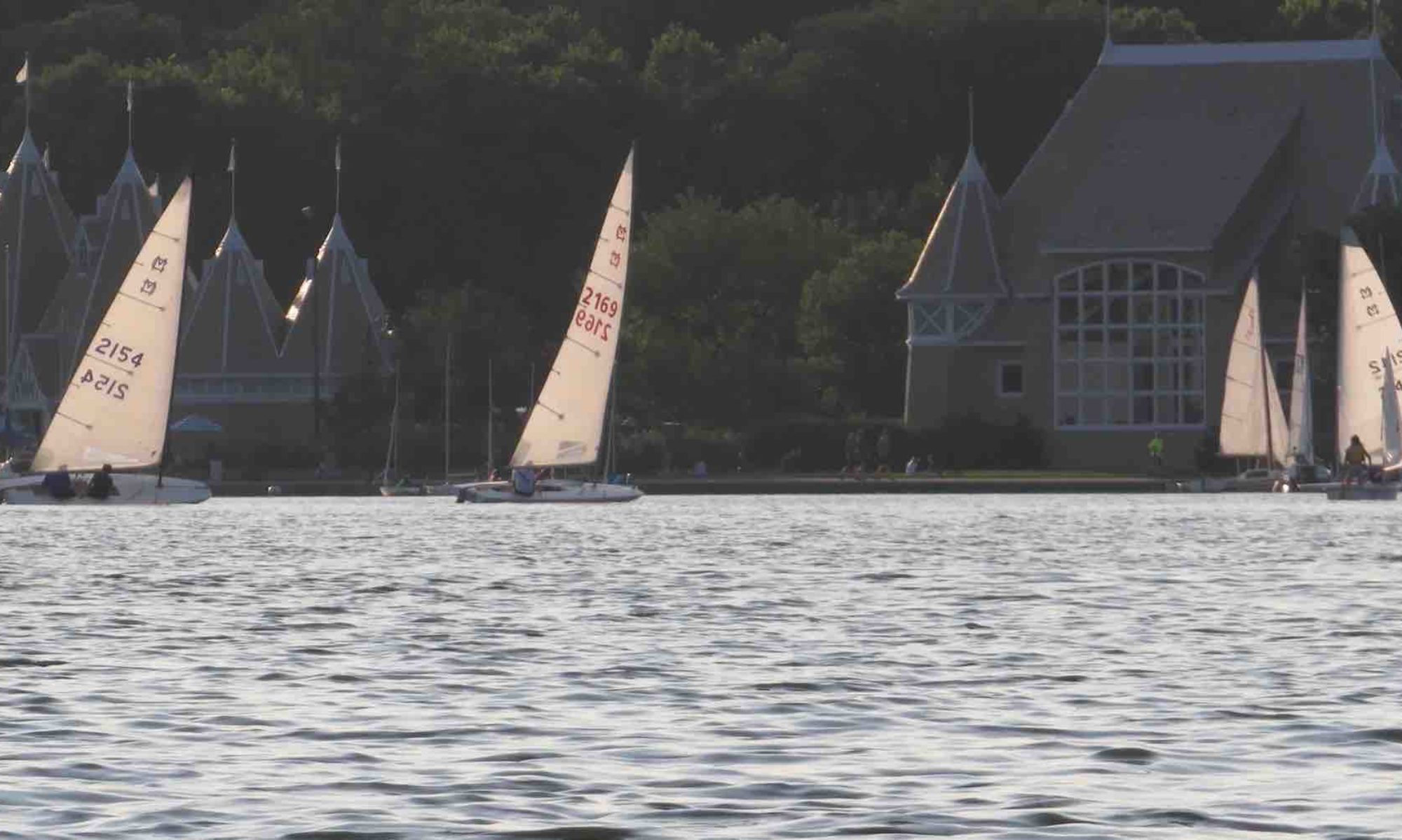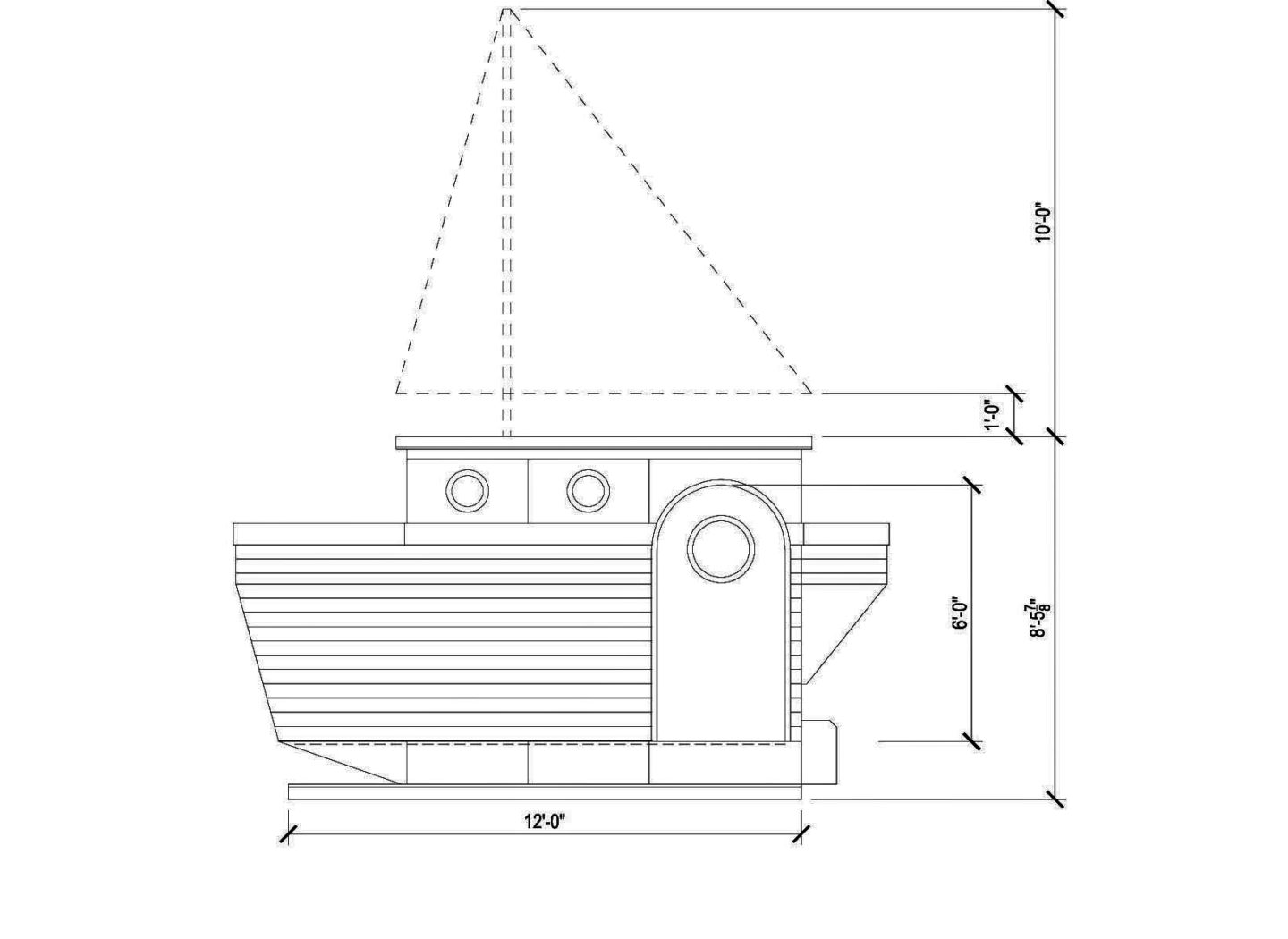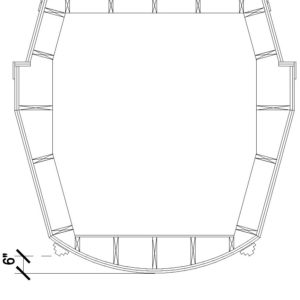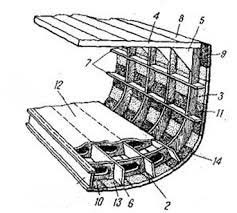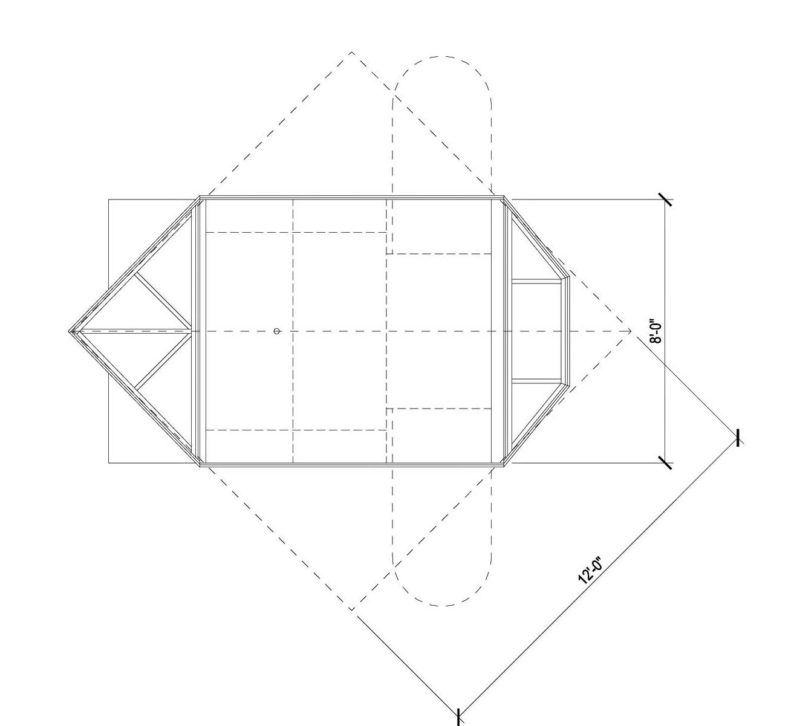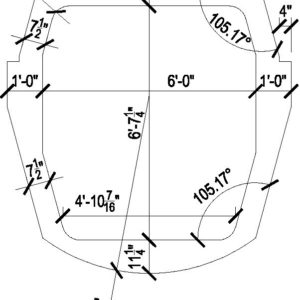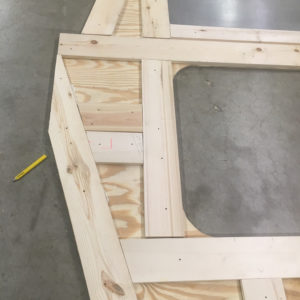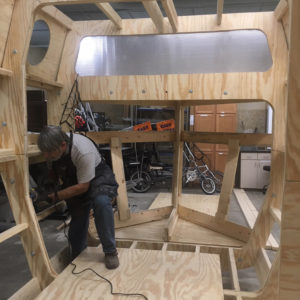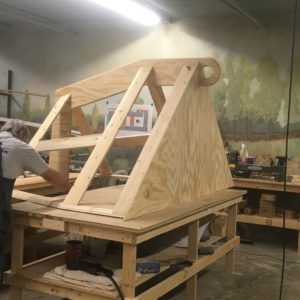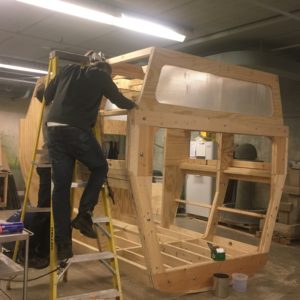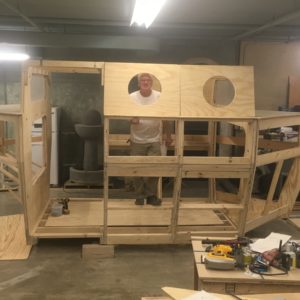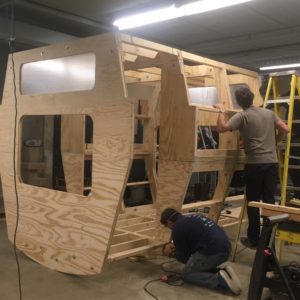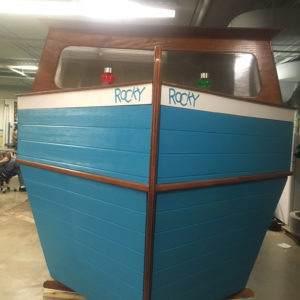The Twin Cities Sailing Club and the Lake Harriet Yacht Club are proud to present “Rocky Sea Shanty,” our on-ice contribution to the 2018 Art Shanty village. From January 20 to February 11, you can visit Rocky on the ice at Lake Harriet in Minneapolis.
TABLE OF CONTENTS
Every participant in the “Rocky Sea Shanty” practices the art of sailing. We do so recreationally, and we represent Lake Harriet, our “home port,” in sailboat races here and afar. With our shanty creation and activities we seek to present and promote sailing as an art of manipulating the endlessly variable forces of wind and water to produce motion. We also present boat building as a craft to fashion vehicles of efficiency, grace and beauty… and sometimes whimsy.
Rocky’s Crew
Chair
Stacey Kelly
Design Team
David “Smitty” Smith, Beth Kalin, A.I.A., Jesse Freeberg, P.E., Alan Engler, Nicole Freeberg
Core Construction Team
Steve Berlin, Alan Engler, David Smith
Mast and Sail Rigger
Tom Spielman
Extended Construction / Transportation Team
Al Watts, Beth Kalin, Brian Foster, Brian Foster, Cindy Armbrustmacher, Colleen DeSutter, David Kelly, David Swierenga, Geo Giuliani, Imants Pone, Jenn O’Brien, Jennifer O’Brien, Jesse Freeberg, Jim Anderson, Joe Reincke, Joe Schroeder, John Barbour, John Berg, José Ayala, Kraig Larson, Laura Silver, Lee Piechowski, Leif Helgeson, Leith Dumas, Len Schmid. Matt “Squid” Stark, Morgan Church, Nicloe Freeberg, Paul Bastyr, Phillip O’Toole, Rich Gross, Ryan Grosch, Stacey Kelly, Ted Jewett, Tom Spielman, Walton Stanley
Promotion and website
Jennifer O’Brien, Kraig Larson
Concept
Make it Rock: We wanted to create a shanty reminiscent of a sailboat in form and feel, and buoyed by, but not locked into, the frozen water. If we can’t make it tack, jibe and round a mark… let’s make it rock! Rocking means a rounded bottom, and rockers as on a cradle. Our Lake Harriet sailboats don’t have rounded bottoms. They have keels, centerboards or bilge boards so that they can tack at an angle into the wind. Here is a traditional 18th century ship with a round bottom of type more appropriate for our ice-rocker.
Make it “Boaty”: Many traditional boats have ribs which support an outside skin of planks. The ribs can be parts of bulkheads which are structural divisions of the boat hull. The ribs are structurally most efficient if they are completely circular members as in a submarine. Our shanty boat needed ribs and planking. A “lapstrake” plank hull effect can be represented by grooved exterior paneling.
Make it Modular: Rather than completely build a shanty/boat as a ready to “sail” unit, and then haul it to Lake Harriet and launch it in traditional boat fashion, we chose to create a modular vessel to transport in pieces to be bolted together on the ice. We consider this modular system a key creative element of our shanty. “Rocky Sea Shanty” can be disassembled after it’s Shanty festival run on Lake Harriet, transported to a new site and reassembled for a second life.
Design
Footprint: Shanties are limited to a 12 by 12 footprint. In order to stretch our length overall (LOA) to fifteen feet we laid our “boat” out corner to corner. The bow and the fantail at the stern fit into the corners.
Rib dimensions: The roughly circular ribs and bulkheads are determined as eight feet high and eight feet wide by “sandwich panels” of two sheets of 4 x 8 plywood butted together horizontally, a core of ¾ inch pine, and another layer of two plywood sheets laid vertically, nailed and glued.
Modules: The ribs formed natural divisions of the hull and possibilities for separating the hull into modules to be joined with bolts. This is a shanty compromise that is not boat-like because it introduced leak points and extra weight in redundant ribs and otherwise unnecessary blocking.
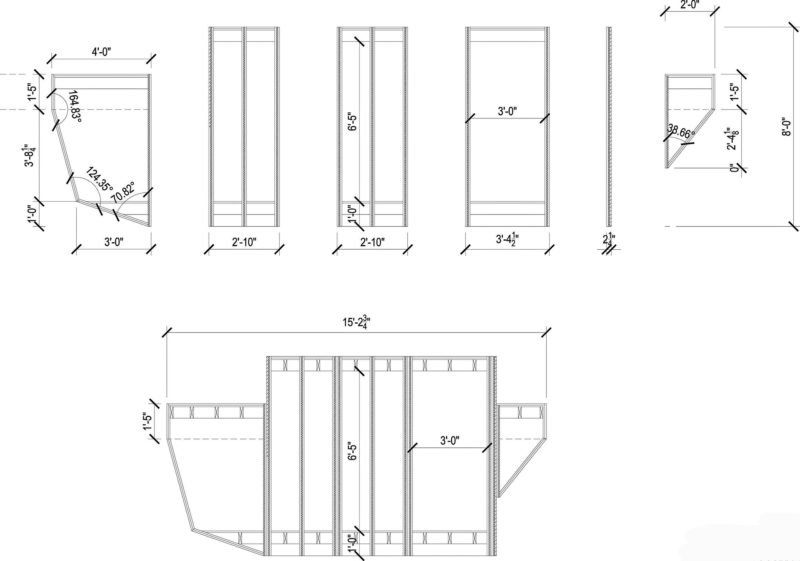
Technical Drawings by Beth Kalin, A.I.A.
Adjustments of the original plans:
The first modification was adopted after spirted debate. We agreed to abandon the traditional ice shanty platform base in order to more freely rock the “boat” directly on the lake surface. This despite the risk that the concentrated weight moving to-and-fro could crack the ice.
The second adjustment was to depth of rocking. The original rockers were arbitrarily drawn at a depth of one foot over a 6 foot circle cord. But the team surmised the resulting rock would be too violent for passengers and would yield a danger of the shanty tipping on its side, so rockers was reduced to a six inch depth over six feet. When the first base unit framing was complete the rock was tested and then dampened further with the addition of outrigger blocks.
Concerns about weight and module size also forced design changes before and after the beginning of construction. We eliminated the ribs in the centers of the two main cabin modules. We changed the rib plywood from 5/8” thick to 1/2”. This latter move not only saved weight in the ribs but also in the cabin sheathing, decking and some transom trim, which all came out of rib scrap plywood.
We were fortunate to have use of a spacious indoor workshop, but the shop door opening limited our component sizes. While a basic rib could be maneuvered through the opening, a cabin module could not. The core construction team consulted our engineer who suggested a way to divide those modules into top and bottom pieces. We hid the resulting seam by adding an exterior rub rail. We also reduced the full rib sections which were parts of the bow and fantail to partial sections. Finally we eliminated the full rib sections which framed the entrance module, a change that made the top (roof) and bottom (rocker) parts separate. The cabin/hull was thus composed of nine modules.
Mast and Sail Rigging
Our rigger began with an eighteen foot long, tapered carbon fiber mast and adapted a steel plate and pipe as a mast step integrated into the forward upper cabin module. The boom is PVC and Tom stitched our faux sails from green snow fence fabric. Unlike the real article, our sails are porous in order to let the wind pass through without affecting course!
Construction
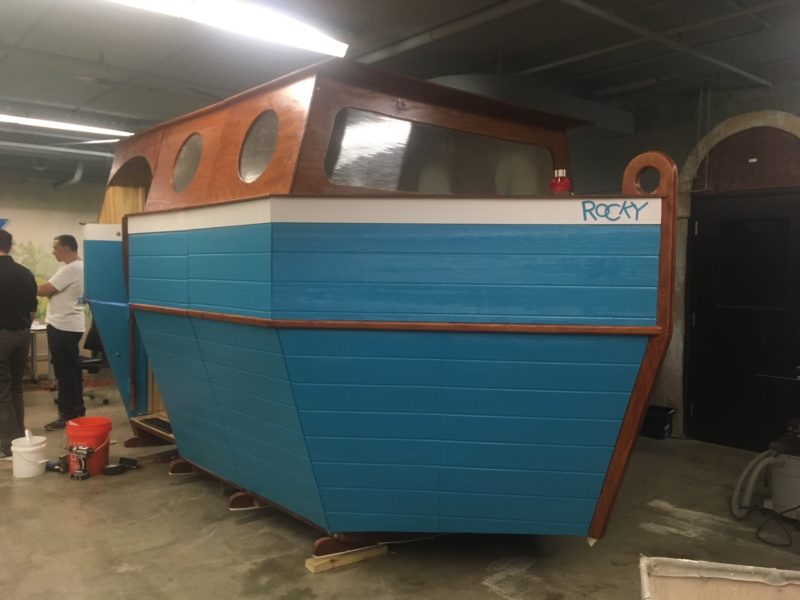
More building Rocky pictures on SmugMug (courtesy LYHC).
Future Plans
Rocky is scheduled for a Fall of 2018 dry-dock refurbishing along with the addition of many new features. Rocky’s captain and crew have tentatively added the 2019 Art Shanty Festival on Lake Harriet as a port-of-call.
